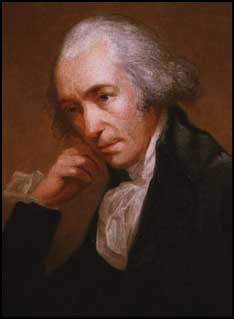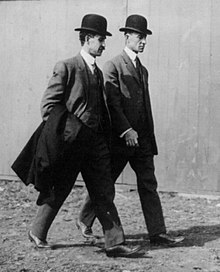10. Alan Turing
 BIODATA:-
BIODATA:-
Born: June 23, 1912, Maida Vale, London, United Kingdom
Died: June 7, 1954, Wilmslow, United Kingdom
Books: Computing Machinery and Intelligence, The Essential Turing: Seminal Writings in Computing, Logic, Philosophy, Artificial Intelligence, and Artificial Life plus The Secrets of Enigma.
Education: Princeton University (1936–1938), King's College, Cambridge (1931–1934), Sherborne School, St. Michael's School.
Parents: Ethel Sara Stoney, Julius Mathison Turing
Siblings: John Turing
INVENTIONS:-
Every time you use a computer, it is in part because Alan Turing made significant contributions to make computing possible. Alan Turing developed the binary architecture now used in all computers, as well as much of the theory behind computers.
He is regarded by some as the father of computer science. He is also credited with breaking the German Enigma code during WWII, which made victory possible. In the years following the war he made numerous contributions in software creation. Time magazine named him as one of the most important people of the 20th century.
9. Nicolaus Otto
 BIODATA:-
BIODATA:-
Born: June 14, 1832, Holzhausen an der Haide, Germany
Died: January 26, 1891, Cologne, Germany
Spouse: Anna Gossi
Children: Gustav Otto
INVENTIONS:-
Nicolaus Otto was a German inventor credited with developing the four-stroke or Otto-cycle engine which sparked the development of the motor care. His Otto-cycle engine worked in four steps; drawing in fuel and air, compressing the mixture, igniting it and expelling the exhaust. This Otto-cycle is still used in the internal combustion engines that run all of our cars today.
8. Nikolna Tesla
BIODATA:-
Born: July 10, 1856, Smiljan, Croatia
Died: January 7, 1943, New Yorker Hotel, New York City, New York, United States
Full name: Nikola Tesla
Awards: Elliott Cresson Medal, IEEE Edison Medal, John Scott Legacy Medal and Premium
Education: Graz University of Technology (1875–1878), Gymnasium Karlovac (1870–1873)
INVENTIONS:-
Tesla moved to America in 1884 to work with Thomas Edison, another remarkable engineer. Within weeks of working for Edison, he indicated that he could improve the efficiency of the company’s generators by 25%. Edison promised Tesla a $50,000 bonus if he achieved this feat. Within weeks Tesla delivered on his promise – and Edison reneged on his, telling young Tesla, “You don’t understand our American humor.”
Every electrical engineer should have a picture of Nikola tattooed somewhere on their bodies. Maybe not a tattoo but at least have a picture of him hanging in their office. Tesla’s inventions make him arguably the greatest electrical engineer of all time. His inventions include fluorescent lighting, the Tesla coil, the induction motor, and 3-phase electricity. He developed the AC-current generation system comprised of a motor and a transformer.
7. Archimedes
BIODATA:-
Born: 287 BC, Syracuse, Italy
Full name: Archimedes of Syracuse
Nationality: Greek
Assassinated: 212 BC, Syracuse, Italy
Parents: Phidias
INVENTIONS:-
It was Archimedes who came up with the simple yet clever idea of determining an object’s volume by measuring the amount of water displaced by the object. Other inventions credited to him include the catapult, levers and pulleys, and the Archimedean Screw, a device used to raise water for irrigation or mining. He also calculated an approximation for pi and developed many mathematical insights without which modern engineering would be impossible.
6. James Watt
BIODATA:-
Born: January 19, 1736, Greenock, United Kingdom
Died: August 25, 1819, Handsworth, West Midlands, United Kingdom
Education University of Glasgow
Parents: Agnes Muirhead, James Watt
Spouse: Ann MacGregor (m. 1777–1819), Margaret Miller (m. 1764–1772)
Children: James Watt junior, Margaret Watt, Gregory Watt, Janet Watt
INVENTIONS:-
James Watt was an enthusiastic inventor whose improvement of the steam engine sparked the Industrial Revolution. During the 1760s he devoted most of his time to improving the efficiency of steam engines. The result was a machine that became very popular that Watt is sometimes mischaracterized as the inventor of the steam engine. Watt’s many mechanical advances earned him several patents, and his engines were used for coal mining, textile manufacturing, transportation and a host of other industrial uses.
The watt unit of power is named after James Watt. He is credited for measuring the power of his steam engine: his test with a strong horse resulted in his determination that a “horsepower” was 550 foot-pounds per second. Subsequent calculation by Watt resulted in one horsepower equaling 746 watts.
5. Hero of Alexandria
BIODATA:-
Hero of Alexandria was an ancient Greek mathematician and engineer who were active in his native city of Alexandria, Roman Egypt.
Born: 10AD
Died: 70AD
INVENTIONS:-
This man could have started the Industrial Revolution in 50 AD with the invention of the Aeolipile, a form of steam or jet engine where jets of steam spin a ball. However, he failed to realize what the device could do, and thought of it as nothing but a toy. Some have speculated that the abundance of slave labor negated any need for a labor-saving device, so no one applied his device in the manner of the Industrial Revolution. Hero also wrote many works on subjects ranging from pneumatics to mathematics to physics.
4. Wilbur and Orville Wright
BIODATA:-
Born: Wilbur- April 16, 1867, milville, Indiana
Orville: august 19, 1871, Dayton, Ohio
Dies: Wilbur- may 30, 1912
Orville: January 30, 1948
INVENTIONS:-
Before Wilbur and Orville discovered what would later become the safest mode of transport, they were bicycle mechanics with a passion for kite-flying. The crucial insights from both fields would later propel them to victory in the race to the sky.
Most prototypes of the time could not stay in the air long enough after taking off. The Wright brothers however understood that stability was crucial in overcoming this challenge. After several experiments using kites and gliders, they created a pulley system that altered the shape of the wing in mid-flight, increasing and decreasing the speeds. The Wright brothers were also the first to look at propeller design and aerodynamics, profoundly changing the world.
3. Henry Ford
BIODATA:-
Born: July 30, 1863, Greenfield Township, Wayne County, and Michigan
Died: April 7, 1947, Fair Lane, Dearborn, Michigan, United States
Full name: Henry Ford
Education: Detroit Business Institute
INVENTIONS:-
Henry Ford realized that he would a more efficient way to mass produce cars in order to lower the price. He looked at other industries and found four principles that would further their goal: interchangeable parts, continuous flow, division of labor, and reducing wasted effort. Ford put these principles into play gradually over five years, fine-tuning and testing as he went along. In 1913, they came together in the first moving assembly line ever used for large-scale manufacturing. Ford produced cars at a record-breaking rate forever changing the automobile industry.
2. Thomas Edison
BIODATA:-
Born: February 11, 1847, Milan, Ohio, United States
Died: October 18, 1931, West Orange, New Jersey, United States
Awards: Congressional Gold Medal, Navy Distinguished Service Medal, Franklin Medal, John Fritz Medal, Matteucci Medal, John Scott Legacy Medal and Premium, Technical Grammy Award, Edward Longstreth MedalMore
INVENTIONS:-
Edison is the most prolific inventor in history, holding a record 1,097 patents. He developed the phonograph, incandescent light bulb, stock ticker, motion picture camera and projector, and hundreds more. He also created the first electrical plant and distribution infrastructure. Without these inventions, modern life is almost inconceivable.
1. Leonardo da Vinci
BIODATA:-
Born: April 15, 1452, Vinci, Italy
Died: May 2, 1519, Amboise, France
Full name: Leonardo di ser Piero da Vinci
Period: High Renaissance
INVENTIONS:-
Perhaps the biggest visionary of all time, Leonardo foresaw everything from the helicopter to the tank to the submarine. Modern engineers have proven that many of his designs, including bridges, hang-gliders, transmissions, parachutes, and more would have worked had they been built. There have been few individuals in the history of engineering who have designed so many revolutionary devices that actually worked. For having this remarkable vision and intelligence, Leonardo qualifies as the most remarkable engineer of all time.

















